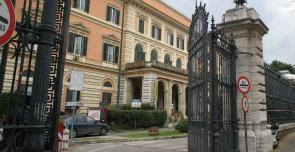February 21, 2012
 |
| The entrance of the Umberto I Polyclinic |
The picture in big cities is the most serious with health services ‘close to collapse’ in Rome, Turin and Naples, according to data studied by the paper.
The number of beds per thousand inhabitants has fallen from 5.1 to 4.2 in 12 years, leaving Italy well below the European average of 5.5 beds per thousand inhabitants.
Cuts in hospital capacity were supposed to be balanced by the expansion of non-acute ‘community’ services under reforms pursued over the past decade, but this has not materialised.
Increased waiting times for public health services and a cut in capacity - the public health system has seen a 17% cut in capacity compared to 5.3% for the private sector – have seen in increase in the use of private clinics in 12 out of the country’s 20 regions.
Severe cuts over the past 15 years has gone hand in hand with healthcare reforms that granted powers to regional administrations to spend centrally provided funds as they saw fit. This resulted in a freeze on hiring healthcare workers, the use of an increasingly casualised workforce and healthcare shopping whereby people (who can) travel to the best facilities typically, in the richer north, creating a postcode lottery of care.
The reforms also allowed a big expansion in state-funded private providers.
For example, Veneto region, run by the extreme right wing Northern League splashed out over a four year period Euros 200 million of taxpayers money to private clinics.
Private clinics, some of which have church links, are also a key target for investment from organised crime and there has been a number of high profile financial scandals linked to them.
The country spends 9% of its gross domestic product on healthcare, putting it behind the UK, France and Germany.
No comments:
Post a Comment